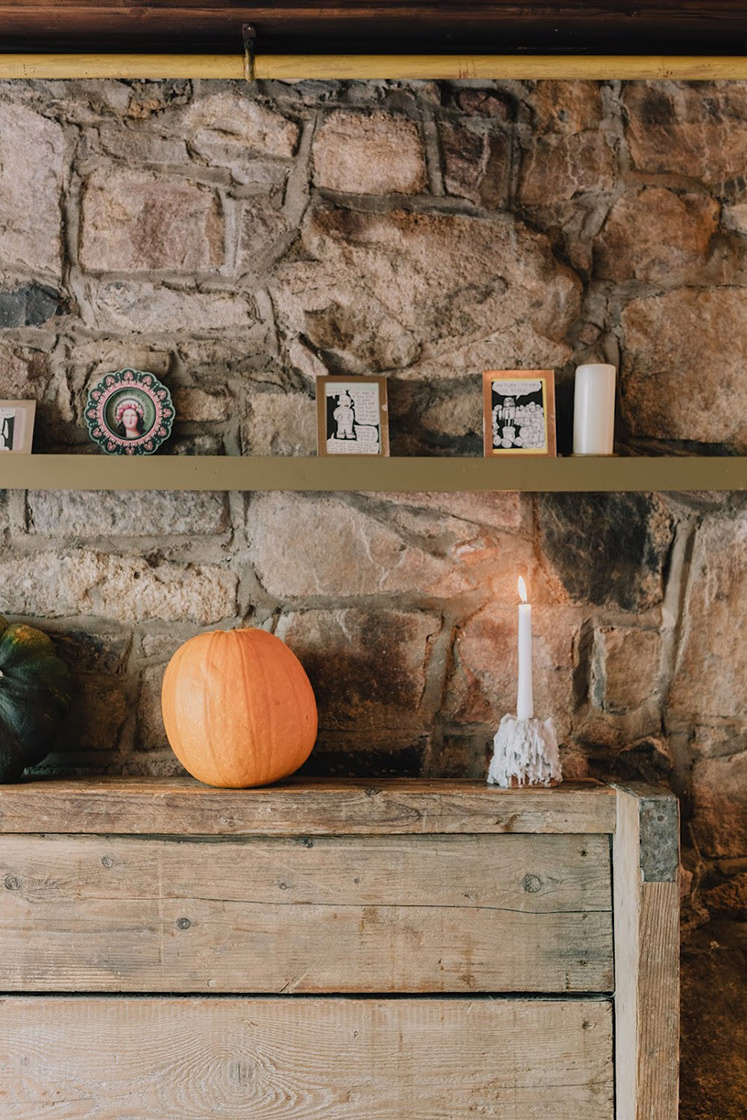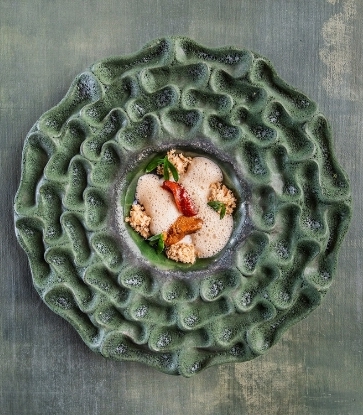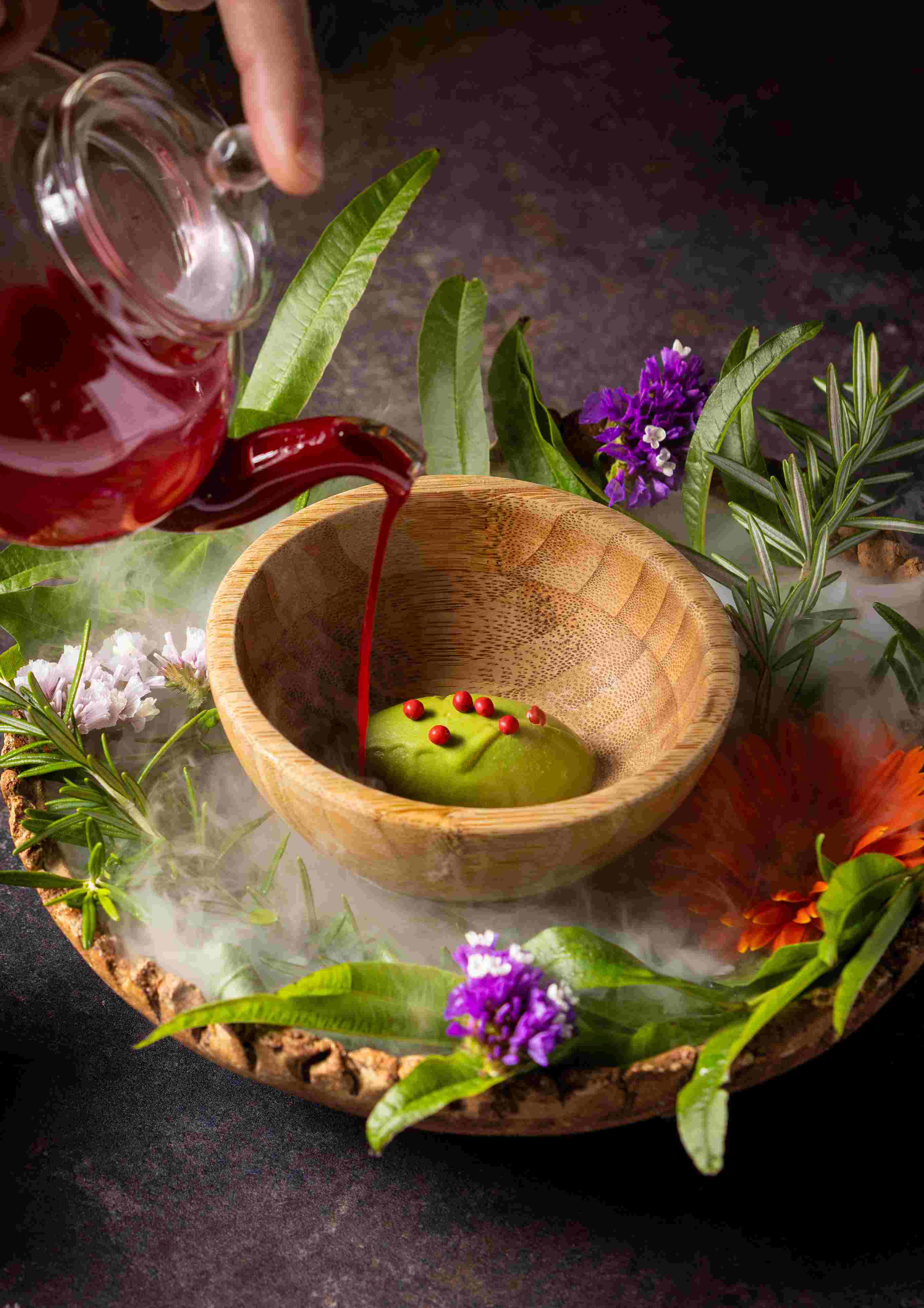Chefs are just like us...or are they? Have you ever wondered why your pineapples aren't as ripe as the ones you get served at restaurants? Well, you’re not alone. In the world of daily shopping, it can be hard picking the right produce. That’s why we took it upon ourselves to ask Green Star MICHELIN restaurants for their secrets to the in’s and out’s of groceries. So get your list ready and prepare to enjoy your fruits and vegetables.
Kai—Jessica Murphy, Chef/Owner
At Green Star (and Bib Gourmand) Kai, vibrant dishes are served with a side of sustainability. 75% of waste at this local favorite is recycled, with the remaining 25% used to produce energy. Add to that a menu that focuses on local and organic produce and you get the perfect spot for a laid-back brunch or a date night out.
SingleThread—Kyle Connaughton, Chef/Owner
Nestled within the heart of Sonoma Wine Country, Three Star (and Green Star) SingleThread is more than just a restaurant. Their 5-acre organic farm is responsible for 70% of the produce used on the exemplary menu. With Japanese influences and unforgettable dishes, it's easy to see why this is one of America’s culinary powerhouses.
Chez Panisse—Varun Mehra, General Manager
With most of their produce coming from an organic farm, Green Star Chez Panisse is a place to eat good and feel good. Combined with a fixed menu focused on peak-season produce, almost zero landfall waste, and owner Alice Waters's incredible efforts with The Edible Schoolyard (a nonprofit dedicated teach the values of nourishment, stewardship, and community), this Bay Area staple is a west coast institution.
Blue Hill at Stone Barns—Dan Barber, Chef/Co-Owner
There’s a reason why Dan Barber has become an icon in the zero-waste landscape. From working with over 64 local farms and fisherman off Long Island, to the the bone-ash china on the tables, the tasting menu at Blue Hill at Stone Barns will forever change the way you think about food.
What is the starting point when selecting produce?
We have the great benefit of produce shopping directly from our own farm! We also love to shop at our local farmers market to speak with the farmers and pick the best quality produce that is in season. Whenever possible, we always suggest shopping at the farmers market to get produce that was harvested that day rather than days or weeks before that may have had to be picked underripe for shipping.
- SingleThread, Kyle Connaughton
Flavor—and good flavor is driven by good farming practices, locality and optimal time for picking. I will admit that judging for flavor can be hard to do in a supermarket, so a greenmarket is a better place to start. Local and organic are important, of course, but those labels only tell you so much. What varieties is a producer growing? What kind of diversity is there on the farm? Being able to ask those kinds of questions will tell you more about a farmer's practices, and serve as a better predictor of how their food will taste.
- Blue Hill at Stone Barns, Dan Barber
It always starts with the farmer; and growers with the best practices have the highest quality and best tasting produce. The ongoing dialogue we have between our chefs and our farmer purveyors is essential to writing the menus. Rather than writing the menu and ordering from a list accordingly, we work in the reverse order, allowing the characteristics of the ingredients to guide us.
- Chez Panisse, Varun Mehra

Any tips/tricks?
Think seasonally and choose what you cook based on the seasons; you'll always have the best produce grown in the best possible way.
- SingleThread, Kyle Connaughton
Get to know a farmer. Learn what they're excited about this week from the farm, and what they wish they could move more of. That second question can make all the difference—for example, broccoli leaves are delicious, but most people don't even know they exist. They're typically composted. But you could ask one of the growers to harvest the leaves. And if enough people are asking, suddenly it's a whole new product for the farmer. That's the type of conversation that's going to activate real change, and get you the most flavorful ingredients.
- Blue Hill at Stone Barns, Dan Barber

Hardest produce to pick?
This year, the hardest one is definitely asparagus—it’s like gold dust in the Irish spring. It's one of the first and most exciting things to happen in spring but can take four years to grow your first crop because you have to grow test crops in between so it's a real slow burner. It's also a moody crop so sometimes we have really good years in Ireland and others are really bad. It also goes out of season really quickly, so you have to fast to get the goods!
- Kai, Jessica Murphy
Melons. It's hard to know what the flavor will be like just by looking at or even feeling it. Even if they feel soft and ripe, the flavor could still be bland. The only way to know is to taste!
- SingleThread, Kyle Connaughton
Right now, it's early spring and we are working with a lot of fava beans—one of the most tedious, most rewarding, and nutritious vegetables. Fava beans are also delicious and really good for soil health. The small new leaves of fava beans offer some of the first fresh greens of the year and as the vines mature, the beans must be shelled from their pods. When the beans are very young they can be eaten with their skins, but as the season progresses and they grow larger, they skins should be removed. We love to make a really simple fava bean puree at the restaurant with garlic, olive oil, sea salt and a squeeze of lemon.
- Chez Panisse, Varun Mehra

Favorite grocery to pick?
My favorite grocery to pick would definitely be an amazing raw milk cheese and/or butter. In my opinion, Ireland is the home of dairy. If you haven't tried Irish butter yet, you are missing out! We have the best butter and milk producers on the planet, especially from small local producers. In old Ireland, butter was prized as a key economic commodity and was often used as currency. The Irish for milk is 'bainne' and butter is 'im'.
- Kai, Jessica Murphy
Definitely tomatoes! I love the variety of flavors and textures that come with really well grown tomatoes. At our farm, we grow over 30 different varieties, each one is so unique in flavor, sweetness, and texture.
- SingleThread, Kyle Connaughton
Salsify in winter; pastured eggs in summer.
- Blue Hill at Stone Barns, Dan Barber
How do you approach seasonality when shopping for produce?
Approaching seasonality is everything! Especially on the Wild Atlantic Way, we are really dependent on the farmers and fishermen/women and what they can bring into us, especially from the Aran Islands.
- Kai, Jessica Murphy
We always just plan our shopping and what we cook based on the seasons. We'll wait all year to eat tomatoes to have them fresh off the vine and at their peak ripeness and flavor. Seasonal produce that is shipped less distance is always going to taste better.
- SingleThread, Kyle Connaughton
Seasonality is non-negotiable, if you want good flavor. And local should rule the day over everything else so that nothing is lost in nutrition or flavor—or spent on the environment—during storage and transportation. What I've learned over the years is that the payoff is incalculable: not just from an environmental or nutritional standpoint, but from the perspective of taste. Local, seasonal produce offers a quality more essential than any seasoning I can provide.
- Blue Hill at Stone Barns, Dan Barber
What are three fresh ingredients to make a no-fuss meal?
How about two? Tomatoes and fresh pasta. There isn't much better in the heat of summer.
- Blue Hill at Stone Barns, Dan Barber
My top no-fuss meal would definitely be grilled Iocal lamb chops, a little snazzy ranch slaw, and some new potatoes with lashings of butter. So the ingredients would be butter, lamb, and top class Irish buttermilk.
- Kai, Jessica Murphy
Spring onions, tomatoes, and peppers.
- SingleThread, Kyle Connaughton
One of the distinctive ingredients often seen on Chez Panisse menus is chervil—a lacy tender herb with a mild licorice flavor. We use it here in salads, fresh sauces, and other cold dishes. It is a principal ingredient in the French herb mix known as 'fines herbes', along with chives, parsley, and tarragon—also staples in our kitchen.
- Chez Panisse, Varun Mehra
Hardest grocery to prep?
The hardest grocery to prep is definitely Cobb nuts which are native, round, little hazelnuts! It takes a lot of patience to sit there, individually smashing them. It's a real labour of love which we do every year because it's just so special to have real Irish wild hazelnuts in our meals.
- Kai, Jessica Murphy
I'm a chef, so nothing is considered too hard! Good pumpkins and squash can be quite a bit of work. They're so hard, so when cutting or peeling them, especially when they are large, can be a challenge. My favorite way to cook with them is to cut them in half, drizzle them with oil and salt, and roast them whole.
- SingleThread, Kyle Connaughton
We prepare late-season asparagus, generally more fibrous and starchy, differently than the young tender spears we see early in the season.
- Chez Panisse, Varun Mehra

What are some common myths when it comes to selecting produce?
That selecting fresh produce is always better than frozen. Some produce are just as good, if not better when frozen. Like peas, for example, are so much better from the freezer department!
- Kai, Jessica Murphy
All tomato varieties are interchangeable. Heirloom varieties of tomatoes differ in sweetness and umami quite substantially.
- SingleThread, Kyle Connaughton
I hear a lot of complaints about eating in the Northeast, and limited produce in the wintertime. But building up a seasonal larder is something that can be very accessible. Buying tomatoes in the summer doesn't mean you can only eat them then: pickles, paste, vinegars, and jams are all ways that anyone can be resourceful and use produce to last you in different ways all year long. Blue Hill preserves 30% of its winter larder in October and November of each year.
- Blue Hill at Stone Barns, Dan Barber
If you were a produce, what would you be?
A massive ball of Burrata!
- Kai, Jessica Murphy
My favorite produce that I can't live without and we always grow is the long Japanese green onion called "negi."
- SingleThread, Kyle Connaughton
And this is a tricky one, but how do you pick the ripest pineapple?
The best way to pick a ripe pineapple is to smell the butt! I learned this in Thailand. You can always smell the sweetness.
- Kai, Jessica Murphy
It's all about it feeling soft at the bottom, not just along the sides.
- SingleThread, Kyle Connaughton
Cut into the pineapple when there is a fragrant smell and the leaves are easy to pull out!
- Chez Panisse, Varun Mehra
The pineapple that's grown nearby! At Stone Barns, the farmers are trialing Northeastern banana varieties in the greenhouse, to see if they can regionalize a tropical fruit to Northeast climate. But pineapple is another story; we haven't gotten there yet.
- Blue Hill at Stone Barns, Dan Barber
Hero image: Amanda Marsalis/Chez Panisse
Thumbnail: Courtesy of SingleThread





















